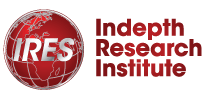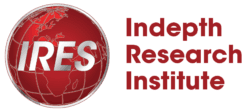In recent years, Africa’s transport sector has faced growing pressure. Urban populations are expanding. Roads are congested. Accidents are rising. Meanwhile, demand for efficient and sustainable mobility is increasing.
To meet these challenges, governments and private stakeholders are turning to Intelligent Transport Systems (ITS). These smart technologies are reshaping how transport infrastructure is managed across Africa, offering safer, faster, and more reliable movement of people and goods.
Contents
What is ITS?
Intelligent Transport Systems (ITS) refer to the integration of communication, control, and information technologies into transport infrastructure and vehicles. ITS applications help monitor, manage, and improve traffic flow and safety in real time.
Key components include:
- Traffic management systems
- Smart traffic signals
- Electronic tolling
- Surveillance cameras
- Vehicle tracking
- Real-time passenger information systems
By using data to make informed decisions, ITS improves transport efficiency and helps reduce congestion, accidents, and emissions.
Learn more about ITS from the World Bank.
Why ITS Matters for Africa
Across Africa, urbanisation is happening rapidly. Cities like Lagos, Nairobi, and Johannesburg face mounting mobility challenges. Traditional transport solutions are no longer enough. ITS offers a smarter approach to infrastructure planning and traffic control. Here is how:
1. Better Traffic Management
In Nairobi, traffic congestion can last for hours, costing the economy millions. ITS tools like adaptive traffic signals and real-time traffic monitoring can ease bottlenecks. Sensors and cameras gather data to optimize traffic flow, especially during peak hours.
2. Improved Road Safety

Africa has one of the highest road fatality rates in the world. ITS technologies like speed enforcement cameras, automatic number plate recognition (ANPR), and emergency response systems can significantly reduce accidents.
For example, South Africa uses ITS to monitor high-risk corridors, alerting authorities quickly when incidents occur.
3. Efficient Public Transport

ITS improves reliability and planning in public transport. Real-time tracking allows passengers to know exactly when a bus or train will arrive. Mobile ticketing and scheduling tools help reduce wait times and enhance user satisfaction.
Cities like Kigali and Addis Ababa are integrating ITS into their public transit systems, improving commuter experience and boosting ridership.
4. Sustainable Infrastructure Planning
ITS supports better data-driven decisions. Planners can analyse travel patterns, peak times, and high-demand routes. This allows for smarter investment in road networks, terminals, and other transport infrastructure.
Moreover, ITS contributes to lower carbon emissions by reducing idle times and encouraging use of public transport.
Examples of ITS Adoption in Africa
Several African countries are already seeing the benefits:
- Morocco: Casablanca uses a centralized traffic management centre equipped with sensors and smart signals.
- Kenya: Nairobi Expressway features electronic toll collection and real-time vehicle monitoring.
- Rwanda: Kigali has introduced smart bus stops with digital timetables and tracking apps.
- South Africa: Johannesburg’s ITS network includes automated traffic signals, surveillance, and integrated control rooms.
These examples demonstrate how ITS is not just a concept but a practical, cost-effective solution already in action.
Challenges to ITS Implementation
While promising, ITS adoption in Africa faces some hurdles:
- High upfront costs: Infrastructure and technology investments can be expensive.
- Lack of technical skills: Many transport agencies need capacity building to operate ITS tools.
- Data privacy concerns: Managing personal and vehicular data requires clear policies.
- Inter-agency coordination: Success depends on collaboration across sectors such as transport, ICT, law enforcement, and urban planning.
Despite these challenges, partnerships between governments, the private sector, and international donors are helping to bridge the gap.
Final Thoughts
To truly benefit from ITS, Africa needs trained professionals. Engineers, planners, policy makers, and system operators must understand how to design, implement, and manage ITS solutions.
Corporate training and consultancy services play a key role. Through targeted workshops, technical certifications, and on-the-job coaching, professionals can gain the skills needed to deploy ITS successfully. This not only improves project outcomes but ensures long-term sustainability.
The future of African infrastructure is digital. Intelligent Transport Systems are not just improving road networks – they are reshaping how cities move, grow, and serve their people.
For professionals in the transport and infrastructure sector, understanding and embracing ITS is essential. As the continent continues to urbanise, ITS will be at the heart of building smart, sustainable, and inclusive transport systems.
Now is the time to invest in knowledge, skills, and collaboration. The journey toward smarter African cities has already begun – and ITS is leading the way.
Read: The Trends Steering Africa’s Transport Revolution
I’m a storyteller at heart and a strategist by trade. With over 3 years of experience in digital marketing, content creation, and brand communications, I’ve worked with leading institutions and dynamic brands to shape narratives that resonate. From educational spaces and corporate training to real estate and sustainability, I’ve crafted content that not only speaks but delivers. This blog is my creative space, a reflection of everything I’ve learned (and keep learning) about writing with purpose, building trust, and turning ideas into impact.









Comment here